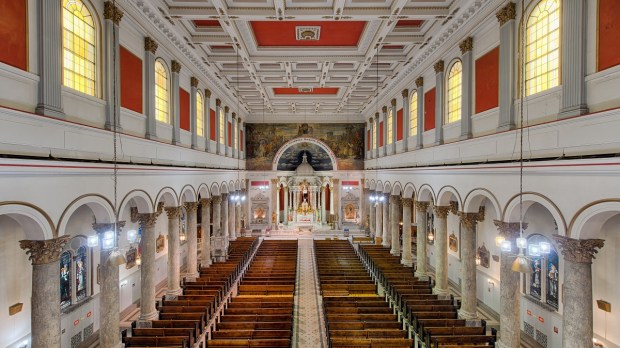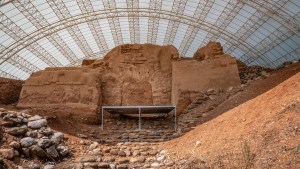A Catholic church that has stood in Chicago’s Pilsen neighborhood for more than 100 years has been saved from the wrecking ball thanks to the efforts of its former parishioners. The Archdiocese of Chicago was forced to shutter its doors in 2019, but the faithful who called it home before becoming absorbed into the nearby parish argued their case for preliminary landmark status and won.
According to CBS, the commission that heard the case for preliminary landmark status voted unanimously to protect St. Adalbert’s Parish, a campus that includes the historic early 20th-century church, a school, a convent, and a rectory. A fifth building on the property, a small garage, was not included in the protection order. The landmark status applies to the exterior portions of all four buildings, which means they cannot be torn down, but room has been left to allow for renovation of the interiors.
The resolution for the preliminary landmark status states:
“[The landmark designation will] ensure that the significant historic and architectural features of the exteriors and rooflines of the four buildings are preserved while allowing reasonable change and flexibility to meet new needs in accommodating future uses including potential new construction on undeveloped portions of the parcel.”
The St. Adalbert’s Parish was founded in 1874 by a Polish Catholic community, which has grown to include a strong Hispanic presence as well, leading the church to offer Masses in Polish and Spanish for years before its closure. The current St. Adalbert’s building has stood in Pilsen since 1914, with the school and convent rising in 1911 and 1928, respectively. The convent includes 52 bedrooms, a library, chapel, and dining hall.
It is unclear if the Archdiocese of Chicago will change its mind about seeking to sell the buildings now that preliminary landmark status has been granted. It is possible that the state will help fund the much needed repairs to the facade if permanent landmark status is granted. St. Adalbert’s two towers have had scaffolding protecting them for years.
Alderman Byron Sigcho-Lopez explained that he had fought for St. Adalbert’s landmark status for years, but the administration under former Mayor Lori Lightfoot had blocked a final City Council vote to stop any redevelopment plans. Under current Mayor Brandon Johnson, however, the vote was allowed to proceed and was passed.
Sigcho-Lopez hailed the efforts of the St. Adalbert’s community, as well as all the others who stood with them to protect the historic presence of the Catholic church:
“Our message is a message of unity. Our message is a message of collaboration. And our message is a message to protect and respect the heritage of every community in the city of Chicago. We ought to make sure that we follow an example so our own children can be proud,” Sigcho-Lopez said. “Immigrant voices have been oftentimes ignored, but most recently dismissed and silenced for way too long.”
Preliminary landmark status is just the first step to permanently protect the St. Adalbert’s building. Now the Department of Planning and Development will explore how a permanent designation might affect neighborhood plans and policies. The Archdiocese must also be given an opportunity to have its say on the matter. It may still be approved if the Archdiocese rejects the idea, but more public hearings would need to be held. It could take over a year for the matter to finally be settled.
Read more at CBS News Chicago.



